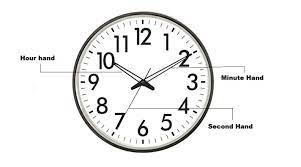How Many Seconds Are in a Day?
Time is one of the most fundamental aspects of our daily lives, influencing everything from our daily routines to the complex workings of scientific research. While most people are familiar with hours and minutes, fewer might ponder how many seconds are in a day. Understanding this concept not only sheds light on timekeeping but also has practical implications in various fields. In this article, we will explore the number of seconds in a day, the factors that affect this calculation, and its significance.
The Basics of Time Measurement
To calculate the number of seconds in a day, it’s essential to understand the basic units of time measurement. Here’s a quick refresher:
- Seconds: The smallest standard unit of time.
- Minutes: Each minute consists of 60 seconds.
- Hours: Each hour is made up of 60 minutes, or 3,600 seconds.
- Days: Each day consists of 24 hours.
Calculating Seconds in an Hour
To determine the total number of seconds in a day, we first need to know how many seconds are in one hour. Since each hour is made up of 60 minutes and each minute consists of 60 seconds, we can use the following calculation:
Seconds in an Hour=60 minutes×60 seconds/minute=3,600 seconds\text{Seconds in an Hour} = 60 \text{ minutes} \times 60 \text{ seconds/minute} = 3,600 \text{ seconds}
Calculating Seconds in a Day
With the number of seconds in an hour known, calculating the total seconds in a day is straightforward. A day consists of 24 hours. Thus, the total number of seconds in a day is:
Seconds in a Day=24 hours×3,600 seconds/hour\text{Seconds in a Day} = 24 \text{ hours} \times 3,600 \text{ seconds/hour}
Carrying out this multiplication gives:
Seconds in a Day=24×3,600=86,400 seconds\text{Seconds in a Day} = 24 \times 3,600 = 86,400 \text{ seconds}
Therefore, a typical day has 86,400 seconds.
The Leap Second: A Special Consideration
The standard calculation of 86,400 seconds applies to most days, but there is an exception known as the leap second. Leap seconds are added to Coordinated Universal Time (UTC) to adjust for irregularities in Earth’s rotation. These adjustments ensure that our clocks remain accurate in relation to the Earth’s rotation and the position of celestial bodies.
Leap seconds are added approximately every 18 months, though this is not a fixed schedule. The decision to add a leap second is made by the International Earth Rotation and Reference Systems Service (IERS). On days when a leap second is added, the total number of seconds in that day will be 86,401.
The Concept of a Sidereal Day
In addition to the solar day, which is based on the Earth’s rotation relative to the Sun, there’s the sidereal day. A sidereal day measures Earth’s rotation relative to distant stars rather than the Sun. This type of day is slightly shorter than the solar day, lasting about 23 hours, 56 minutes, and 4.1 seconds.
To calculate the number of seconds in a sidereal day, we convert the hours, minutes, and seconds into total seconds:
- Convert hours to seconds: 23 hours×3,600 seconds/hour=82,800 seconds23 \text{ hours} \times 3,600 \text{ seconds/hour} = 82,800 \text{ seconds}
- Convert minutes to seconds: 56 minutes×60 seconds/minute=3,360 seconds56 \text{ minutes} \times 60 \text{ seconds/minute} = 3,360 \text{ seconds}
- Add the remaining seconds: 4.1 seconds4.1 \text{ seconds}
Adding these together:
Seconds in a Sidereal Day=82,800+3,360+4.1=86,164.1 seconds\text{Seconds in a Sidereal Day} = 82,800 + 3,360 + 4.1 = 86,164.1 \text{ seconds}
Thus, a sidereal day has approximately 86,164.1 seconds.
The Significance of Time Calculation
Understanding the number of seconds in a day extends beyond simple curiosity. Here are a few key areas where this knowledge is particularly significant:
Technology
Precise timekeeping is crucial for modern technology. Systems like GPS satellites, which provide location data, rely on extremely accurate timing to function properly. Even a small error in time measurement can lead to significant discrepancies in location data. Accurate timekeeping also affects data synchronization and network operations in telecommunications.
Science
In scientific research, particularly in fields such as astronomy and physics, precise measurements of time are vital. For instance, astronomers track celestial objects using highly accurate timekeeping to measure their positions and movements. In physics, experiments that rely on atomic clocks require exact timing to ensure the validity of results.
Daily Life
Time management in our daily lives also relies on understanding time units. Whether scheduling appointments, managing tasks, or planning events, knowing how time is divided into seconds, minutes, and hours helps us structure our activities effectively.
The Role of Leap Seconds in Timekeeping
Leap seconds, though infrequent, play a critical role in maintaining the accuracy of timekeeping systems. By accounting for irregularities in Earth’s rotation, leap seconds help ensure that our clocks remain in sync with the Earth’s rotation and the position of celestial bodies. This synchronization is crucial for activities that depend on precise timing, such as scientific observations and global communication networks.
Conclusion
In conclusion, a standard day contains 86,400 seconds, while a sidereal day has about 86,164.1 seconds. The addition of leap seconds is a special consideration that can affect this total, though such adjustments are relatively rare. Understanding these calculations not only enhances our appreciation of time but also underscores the importance of accurate timekeeping in various aspects of modern life, from technology and science to daily time management.














Post Comment